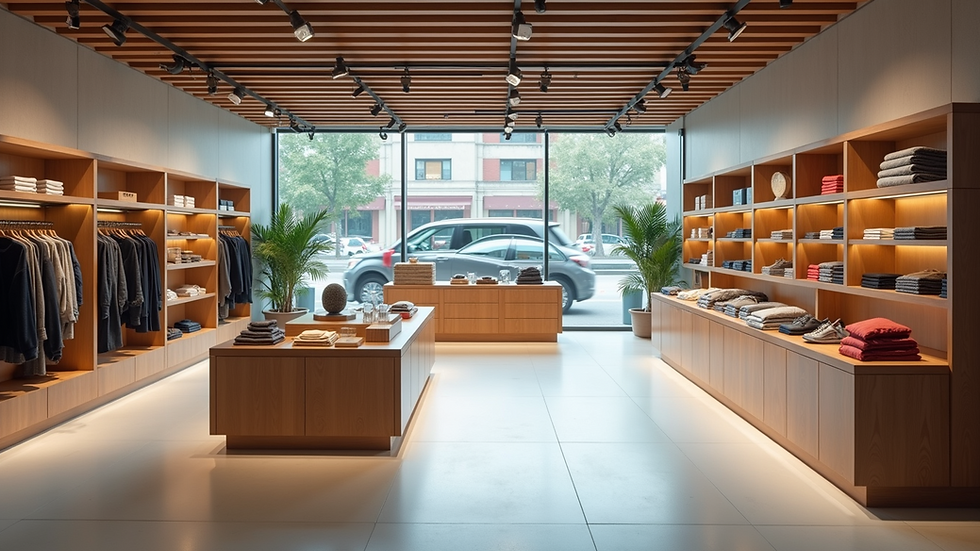Customer Reward systems Maximizing Business Growth with Loyalty Programs
- Ahmed Tahoun
- 6 days ago
- 4 min read
In today’s competitive marketplace, businesses are constantly seeking ways to grow and maintain their customer base. One effective strategy that has gained traction over the years is implementing a customer reward system. This type of loyalty program fosters repeat business, enhances customer satisfaction, and can significantly boost your bottom line. In this post, we'll explore how loyalty programs can maximize business growth and discuss actionable strategies for implementation.

Understanding Customer Reward Systems
A customer reward system, often referred to as a loyalty program, is designed to encourage customers to continue shopping with a business by offering various incentives. These programs can vary widely in complexity, from simple punch cards to sophisticated digital platforms that track customer behavior and rewards. The main goal is to create a mutually beneficial relationship where customers receive rewards for their loyalty, while businesses gain more consistent revenue.
Key Features of Successful Loyalty Programs
Simple Enrollment: Make it easy for customers to join your program. A straightforward sign-up process can lead to higher participation.
Clear Rewards Structure: Clearly outline how customers can earn rewards. Whether it’s points per purchase, cash back, or tiered benefits, transparency is crucial.
Multiple Reward Options: Offer a variety of reward types to cater to different customer preferences. This could include discounts, exclusive access to products, or special events.
Engagement: Regularly engage with customers through email, SMS, or app notifications about their status, available rewards, or special promotions. This keeps your program top of mind.
What is the Main Goal of a Loyalty Program?
The primary purpose of a loyalty program is to increase customer retention. Studies show that acquiring a new customer can cost five times more than retaining an existing one. By providing rewards, businesses can foster a sense of belonging, making customers feel valued. Additionally, loyal customers are likely to spend more over time and can become brand advocates, spreading positive word-of-mouth.
For example, Starbucks employs a robust loyalty program called Starbucks Rewards, which allows customers to collect stars for every purchase. These stars can be redeemed for free drinks or exclusive offers, cultivating customer loyalty and encouraging frequent visits.

The Impact of Loyalty Programs on Sales and Customer Retention
Research shows that businesses with effective loyalty programs can experience a significant increase in sales. According to a study by Nielsen, loyalty program participants spend 12 to 18% more per year than non-members. This spending increase can be attributed to a heightened sense of value customers feel when they are rewarded for their purchases.
Added to this, loyalty programs can also reduce churn rate. The longer a customer engages with a rewards program, the less likely they are to switch to a competitor. A well-structured loyalty program ensures that your customers think twice before abandoning your brand.
Personalization and Customer Experience
Personalization is a growing trend in marketing, and loyalty programs are no exception. By collecting data on customer preferences and purchasing habits, businesses can tailor their offerings.
For instance, Amazon uses customer data to provide personalized recommendations based on previous purchases. Their Prime membership program also incentivizes repeat purchases with exclusive benefits like same-day delivery and special sales.
Incorporating tailored rewards can enhance the customer experience—and in turn—drive loyalty. Whether through personalized discounts or exclusive early access to products, the more relevant the rewards, the more engaged the customers will be.

Measuring the Success of Your Loyalty Program
To truly understand the effectiveness of your loyalty program, monitoring key performance indicators (KPIs) is essential. Consider focusing on the following metrics:
Customer Retention Rate: Measure how well your loyalty program keeps customers returning over time. A high retention rate indicates that your program is successful in fostering loyalty.
Average Transaction Value: Analyze whether loyalty members are spending more than non-members. A rising average transaction value can signal positive program effects.
Engagement Rates: Keep track of how many customers are actively participating in your loyalty program. High engagement levels typically correlate with customer satisfaction.
Redemption Rates: A good loyalty program should encourage customers to redeem their rewards. Analyze redemption rates to identify if customers find the rewards valuable.
By assessing these metrics, businesses can refine their loyalty strategies to maximize growth.
Actionable Strategies to Launch a Successful Loyalty Program
Define Your Objectives: Clearly outline what you aim to achieve with your program. Whether it is increasing repeat purchases or capturing customer data, your objectives will guide the program's design.
Choose the Right Technology: Depending on your business's size, you may opt for a simple punch card or invest in a software solution that tracks purchases digitally. Ensure the technology you choose aligns with your goals.
Promote Your Program: Utilize all available channels to market your loyalty program. This includes social media, in-store signage, email newsletters, and your website.
Train Your Staff: Equip your staff with knowledge about the loyalty program's details so they can effectively communicate benefits to customers.
Feedback Loop: Encourage customers to provide feedback on your loyalty program. Surveys can reveal insights on what they value most and how to improve your offerings.
In addition to these strategies, consider highlighting loyalty program benefits in your communications to drive interest and sign-ups. Explaining how customers can earn and redeem rewards is crucial in creating a compelling narrative around your program.
Final Thoughts
Implementing a customer reward system can significantly enhance business growth. By focusing on customer loyalty, personalizing their experience, and measuring success, businesses can create a successful loyalty program that meets both customer and business needs. As you embark on this journey, remember that consistent engagement and value are key to maintaining your customers' loyalty and satisfaction.
With the right strategies, your loyalty program can transform one-time buyers into lifelong brand advocates.















Comentarios